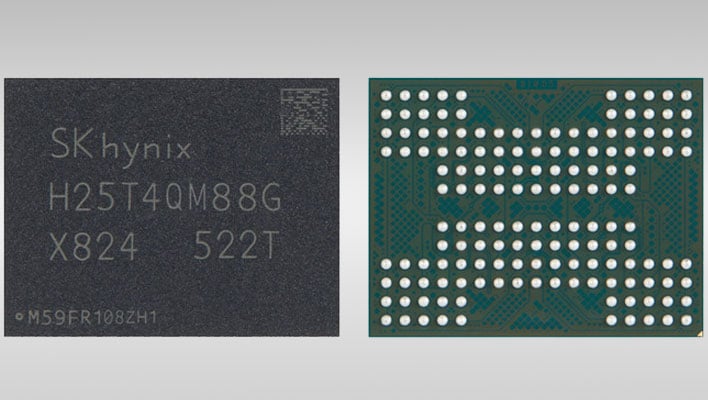SK hynix says it has begun mass production of its 321-layer 2-terabit (Tb) quad-level cell (QLC) NAND flash memory, which marks the first implementation of QLC NAND to employ more than 300 layers. Notably, SK hynix
demoed 321-layer 1tb triple-level cell (TLC) chips a couple of years ago. The upshot of "setting a new benchmark in NAND density" is that it paves the way for "ultra-high capacity" solid state drives (SSDs), and not just for the data center.
In fact, in a somewhat surprising twist, SK hynix says it will apply its 321-layer NAND to PC SSDs first, followed by an expansion into data center storage. While not exactly a seismic revelation in the storage space, we've become accustomed to data centers getting first dibs on cutting-edge storage developments, so this is a refreshing change of pace. This is especially true in the era of AI, a sector that
SK hynix predicts NVIDIA will dominate for the next several years.
"With the start of mass production, we have significantly strengthened our high-capacity product portfolio and secured cost competitiveness," said Jeong Woopyo, Head of NAND Development at SK hynix. "We will make a major leap forward as a full-stack AI memory provider, in line with the explosive growth in AI demand and high-performance requirements in the data center market."
SK hynix is claiming that by doubling the capacity of existing solutions, it is able to maximize cost competitiveness. It also increased the number of planes from four to six to mitigate potential performance degradation from churning out larger-capacity NAND. In this context, a plane is a cell and its peripheral circuitry that can operate independently within a single chip.
Additionally, SK hynix says the increase in planes significantly improves read performance, a key factor in data processing. The South Korean memory chip maker is claiming it was able to double data transfer speeds, while notching gains of 56% to write performance, 18% in read performance, and 23% in write power efficiency.
"Leveraging its proprietary 32DP3 technology, which enables the simultaneous stacking of 32 NAND dies in a single package, SK hynix aims to enter the ultra-high-capacity eSSD market for AI servers by achieving twice the integration density," SK hynix says.
The next step is to valid its 321-layer 2tb QLC NAND flash memory with customers around the world. Once that is complete, SK hynix will release its memory to drive makers, which it
anticipates happening in the first half of 2026.

